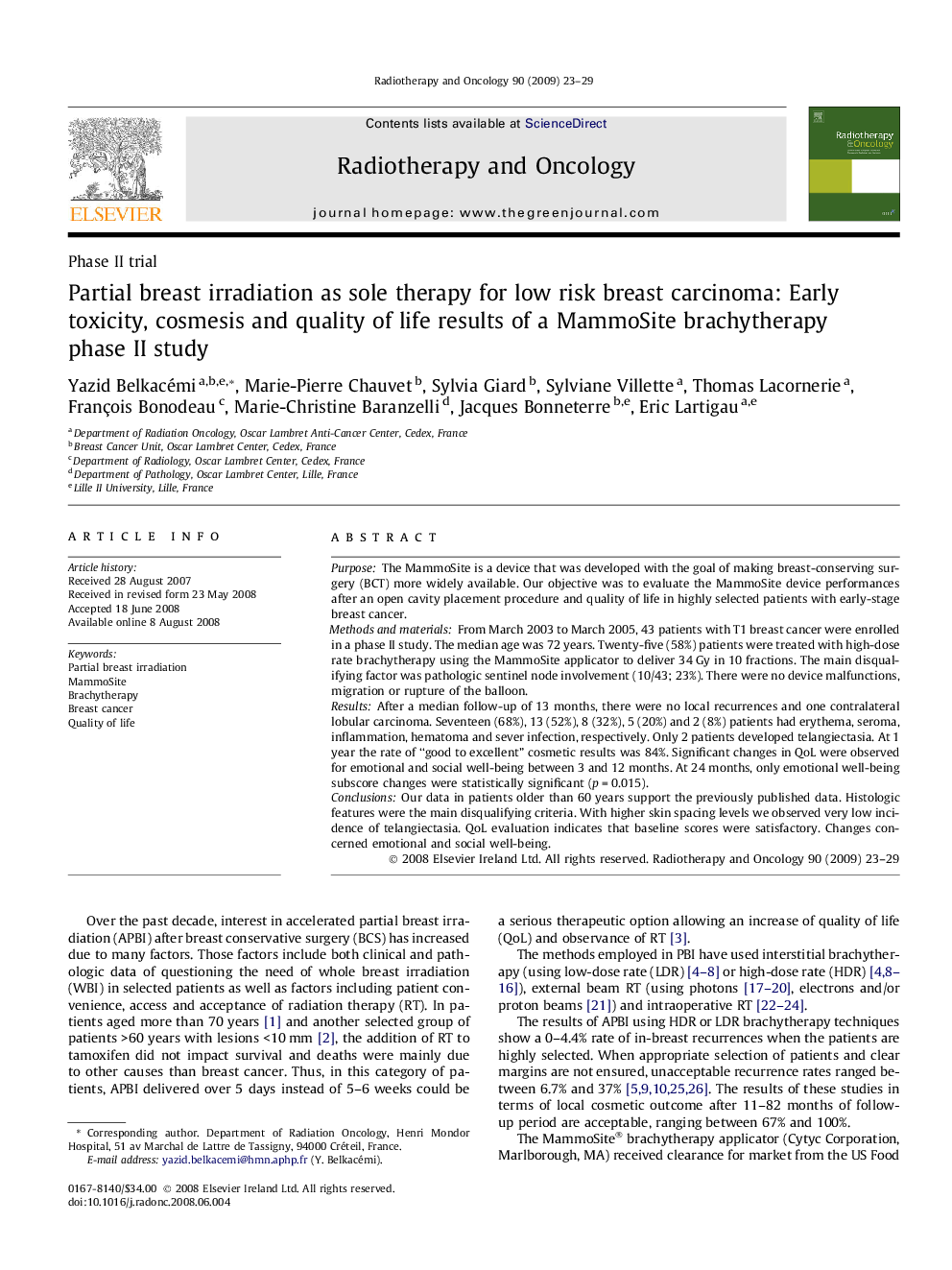| Article ID | Journal | Published Year | Pages | File Type |
|---|---|---|---|---|
| 2160146 | Radiotherapy and Oncology | 2009 | 7 Pages |
PurposeThe MammoSite is a device that was developed with the goal of making breast-conserving surgery (BCT) more widely available. Our objective was to evaluate the MammoSite device performances after an open cavity placement procedure and quality of life in highly selected patients with early-stage breast cancer.Methods and materialsFrom March 2003 to March 2005, 43 patients with T1 breast cancer were enrolled in a phase II study. The median age was 72 years. Twenty-five (58%) patients were treated with high-dose rate brachytherapy using the MammoSite applicator to deliver 34 Gy in 10 fractions. The main disqualifying factor was pathologic sentinel node involvement (10/43; 23%). There were no device malfunctions, migration or rupture of the balloon.ResultsAfter a median follow-up of 13 months, there were no local recurrences and one contralateral lobular carcinoma. Seventeen (68%), 13 (52%), 8 (32%), 5 (20%) and 2 (8%) patients had erythema, seroma, inflammation, hematoma and sever infection, respectively. Only 2 patients developed telangiectasia. At 1 year the rate of “good to excellent” cosmetic results was 84%. Significant changes in QoL were observed for emotional and social well-being between 3 and 12 months. At 24 months, only emotional well-being subscore changes were statistically significant (p = 0.015).ConclusionsOur data in patients older than 60 years support the previously published data. Histologic features were the main disqualifying criteria. With higher skin spacing levels we observed very low incidence of telangiectasia. QoL evaluation indicates that baseline scores were satisfactory. Changes concerned emotional and social well-being.
